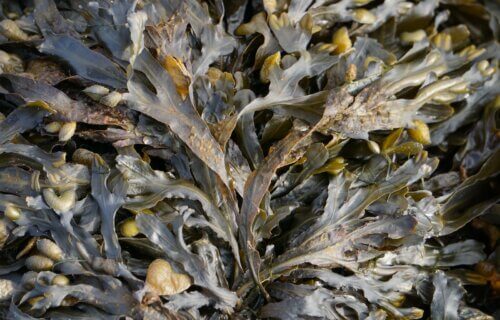GLASGOW, Scotland — Early Europeans consumed seaweed 3,000 years before it was recognized as a delicacy in the Far East, a new study reveals. From areas stretching from Orkney to Spain, ancient Europeans consumed freshwater plants and the now-popular superfood as early as 8,000 years ago, according to researchers in Scotland.
While seaweed has gained modern acclaim as a “superfood” for its health and sustainability advantages, the study notes that our ancestors were actually pioneers when it came to its consumption.
Researchers have uncovered “definitive” archaeological evidence showing that during the Mesolithic period, extending through the Neolithic shift to agriculture and into the Early Middle Ages, seaweeds and other local freshwater plants were part of the average human’s diet. These findings suggest that such foods, now seldom consumed by Europeans, only began to diminish in popularity relatively recently.
The research emphasizes that although aquatic resources were utilized, evidence for seaweed consumption remains infrequent. Typically, seaweed’s historical significance is tied to non-edible purposes, like fuel, food packaging, or fertilizers.

Historical records note laws regarding seaweed collection in places like Iceland, Brittany, and Ireland from the 10th Century. The Roman author Pliny even mentioned sea kale as a remedy against scurvy for sailors.
By the 18th century, seaweed became a last-resort food during famines. Although it remains economically significant in parts of Asia for its nutritional and medicinal benefits, its consumption in Europe is minimal.
The investigative team, comprising archaeologists from the Universities of Glasgow and York, analyzed biomarkers from the dental calculus of 74 individuals from 28 European archaeological sites, ranging from north Scotland to southern Spain. Their findings provide “direct evidence of widespread consumption of seaweed and submerged aquatic and freshwater plants.” Biomolecular evidence from the samples revealed consumption of various seaweeds or freshwater plants, with one sample from Orkney showing signs of a Brassica, likely sea kale.
“Our study also highlights the potential for rediscovery of alternative, local, sustainable food resources that may contribute to addressing the negative health and environmental effects of over-dependence on a small number of mass-produced agricultural products that is a dominant feature of much of today’s western diet, and indeed the global long-distance food supply more generally,” says Professor Karen Hardy from the University of Glasgow, the Principal Investigator of the Powerful Plants project, in a media release.
The researchers hope their study underscores the benefits of incorporating more seaweeds and local freshwater plants into modern diets.
“Today, seaweed and freshwater aquatic plants are virtually absent from traditional, western diets and their marginalization as they gradually changed from food to famine resources and animal fodder, probably occurred over a long period of time, as has also been detected elsewhere with some plants,” says Professor Hardy.
Of the roughly 10,000 seaweed species globally, only 145 are consumed today, predominantly in Asia.
“The biomolecular evidence in this study is over three thousand years earlier than historical evidence in the Far East. Not only does this new evidence show that seaweed was being consumed in Europe during the Mesolithic Period around 8,000 years ago when marine resources were known to have been exploited, but that it continued into the Neolithic when it is usually assumed that the introduction of farming led to the abandonment of marine dietary resources,” concludes Dr. Stephen Buckley from the University of York, a co-author of the study. “This strongly suggests that the nutritional benefits of seaweed were sufficiently well understood by these ancient populations that they maintained their dietary link with the sea.”
The research is published in the journal Nature Communications.
You might also be interested in:
- Amazing archaeological finds dating back to 10,000 BC unearthed just 8 miles from Stonehenge
- ‘Super seaweed’ boosts health so dramatically it could revolutionize modern medicine
- Stone Age sandwiches? Signs of baked bread and cooked meat could rewrite history of Neolithic diets
South West News Service writer Stephen Beech contributed to this report.

